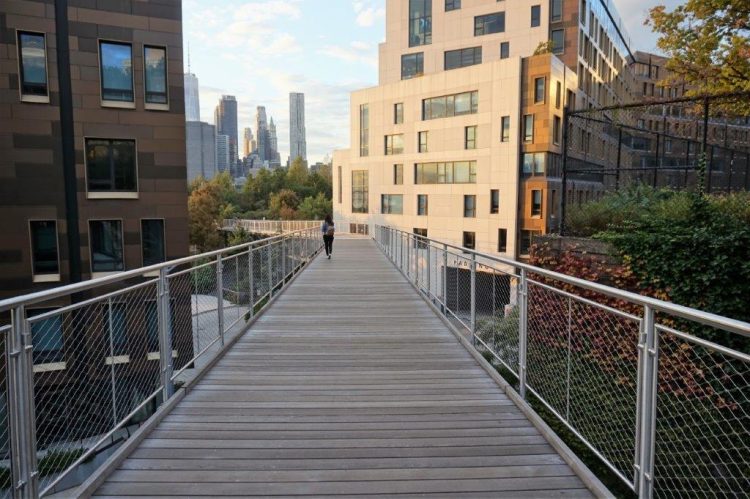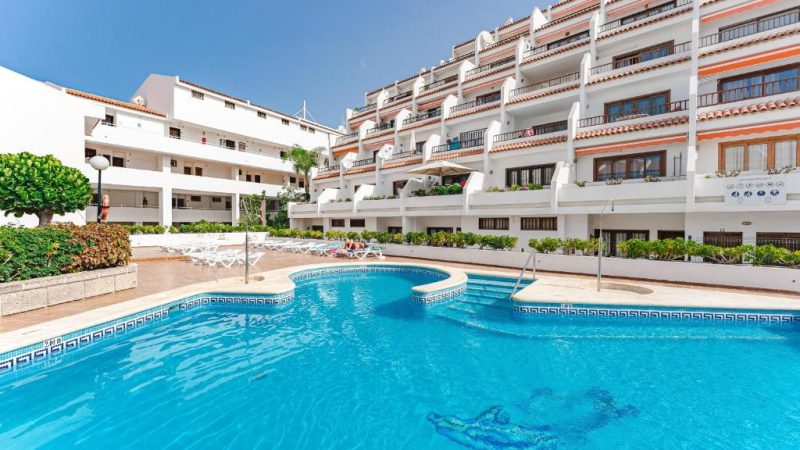: Exploring the Beauty and History of Squibb Park Bridge in Brooklyn

Brooklyn, the cultural heart of New York City, is home to a myriad of architectural gems and hidden treasures. Among these, Squibb Park Bridge stands out as a testament to both modern design and historical significance. Spanning gracefully across the lush greenery of Squibb Park, this suspension bridge offers not only a convenient connection between Brooklyn Heights and Brooklyn Bridge Park but also a visual treat for locals and tourists alike.
The Aesthetic Marvel:
Squibb Park Bridge, completed in 2013, is an architectural marvel that seamlessly blends functionality with aesthetics. Designed by Ted Zoli, a renowned bridge engineer, the bridge stands out for its elegant simplicity. The structure, a 450-foot-long cable-stayed pedestrian bridge, gracefully arches over the landscape, providing breathtaking views of the surrounding area.
The bridge’s design is characterized by its slender form and the use of sustainable materials, creating a harmonious connection with the natural environment. The undulating curves of the bridge give it a dynamic appearance, almost like a ribbon floating above the trees. The wooden deck, made from sustainably sourced ipe wood, adds warmth and a tactile quality, inviting pedestrians to take a leisurely stroll and enjoy the scenic beauty.
Connecting Communities:
One of the key features of Squibb Park Bridge is its role in fostering community connections. The bridge serves as a vital link between the neighborhoods of Brooklyn Heights and Brooklyn Bridge Park, offering a convenient and scenic pathway for pedestrians. Residents and visitors alike use the bridge to access the park, creating a flow of movement that contributes to the vibrant energy of the area.
The bridge’s location is strategic, providing not only a practical means of crossing but also an elevated experience. As pedestrians traverse the bridge, they are treated to panoramic views of the Manhattan skyline, the Brooklyn Bridge, and the Statue of Liberty. This unique vantage point makes the journey across Squibb Park Bridge a memorable experience, transcending the mundane act of getting from one point to another.
Historical Significance:
While Squibb Park Bridge itself is a modern creation, its location holds historical significance. Squibb Park, named after pharmaceutical entrepreneur Edward Robinson Squibb, has a rich history dating back to the 19th century. Edward Squibb was a pioneer in the pharmaceutical industry and played a crucial role in establishing quality standards for medicines.
The park, once an industrial waterfront site, underwent a transformation in the late 20th century, evolving into the green oasis it is today. The juxtaposition of the modern bridge against the historical backdrop of the park creates a fascinating blend of old and new, reminding visitors of Brooklyn’s rich and diverse heritage.
Community Engagement and Events:
Squibb Park Bridge is more than just a pedestrian pathway; it serves as a hub for community engagement and events. The bridge’s open design allows for a variety of activities, from art installations to musical performances. Local artists frequently use the bridge as a canvas, turning it into a temporary outdoor gallery.
Additionally, community events such as farmers’ markets, yoga classes, and cultural festivals often take place on either side of the bridge, creating a lively atmosphere that brings people together. Squibb Park Bridge, with its inviting design and scenic surroundings, has become a focal point for community gatherings and a symbol of Brooklyn’s dynamic cultural life.
Challenges and Restoration:
Despite its initial success and popularity, Squibb Park Bridge faced challenges in its early years. The bridge was temporarily closed in 2014 and 2019 due to structural issues, raising concerns about its long-term viability. However, the community rallied behind the iconic structure, advocating for its restoration and preservation.
In 2020, after undergoing extensive renovations, Squibb Park Bridge reopened to the public. The restoration project addressed structural concerns and reinforced the bridge’s foundations, ensuring its safety and longevity. The successful rehabilitation of the bridge is a testament to the community’s commitment to preserving its architectural gems and maintaining a connection to the past.
Conclusion:
Squibb Park Bridge in Brooklyn is more than just a means of crossing from one point to another; it is a symbol of the borough’s rich history, vibrant community spirit, and commitment to innovative design. As pedestrians traverse its elegant curves and enjoy breathtaking views, they become part of a living tapestry that weaves together the past, present, and future of Brooklyn. The bridge stands as a testament to the resilience of community, the importance of preserving architectural landmarks, and the enduring beauty of a city that continues to evolve while embracing its roots.
-
What is Squibb Park Bridge?
- Squibb Park Bridge is a pedestrian suspension bridge located in Brooklyn, New York. It spans Squibb Park and connects the neighborhoods of Brooklyn Heights and Brooklyn Bridge Park.
-
When was Squibb Park Bridge built?
- The bridge was completed in 2013. It is a relatively recent addition to the Brooklyn landscape, designed by bridge engineer Ted Zoli.
-
Who designed Squibb Park Bridge?
- Squibb Park Bridge was designed by Ted Zoli, a renowned bridge engineer known for his innovative and aesthetic bridge designs.
-
What is the length of Squibb Park Bridge?
- The bridge is approximately 450 feet long, providing a graceful and scenic pathway for pedestrians.
-
What materials were used in the construction of Squibb Park Bridge?
- The bridge features a slender design with a wooden deck made from sustainably sourced ipe wood. The cables and support structures are made from durable materials, contributing to the bridge’s aesthetic and functional appeal.
-
What is the purpose of Squibb Park Bridge?
- Squibb Park Bridge serves as a pedestrian walkway, offering a convenient and picturesque connection between Brooklyn Heights and Brooklyn Bridge Park. It facilitates easy access for residents and visitors while providing stunning views of the surrounding area.
-
What are the key attractions visible from Squibb Park Bridge?
- Pedestrians crossing Squibb Park Bridge can enjoy panoramic views of the Manhattan skyline, the Brooklyn Bridge, and the Statue of Liberty. The bridge’s strategic location offers a unique vantage point for capturing the beauty of the cityscape.
-
Is Squibb Park Bridge accessible to cyclists and vehicles?
- No, Squibb Park Bridge is exclusively designed for pedestrian use. It does not accommodate cyclists or vehicles, contributing to a tranquil and safe environment for those on foot.
-
What events and activities take place on Squibb Park Bridge?
- The bridge serves as a venue for community events, art installations, and cultural festivals. Local artists often use the space for temporary exhibits, and the surrounding areas host various activities such as farmers’ markets and yoga classes.
-
Has Squibb Park Bridge faced any challenges?
- Yes, Squibb Park Bridge experienced temporary closures in 2014 and 2019 due to structural concerns. However, the bridge underwent extensive renovations, addressing these issues, and reopened to the public in 2020.
-
Is there any historical significance associated with Squibb Park?
- Yes, Squibb Park is named after Edward Robinson Squibb, a pharmaceutical entrepreneur from the 19th century. The park has a rich history and was transformed from an industrial waterfront site into the green space it is today.
-
How can visitors get to Squibb Park Bridge?
- Visitors can access Squibb Park Bridge by foot, and it is conveniently located for those exploring the neighborhoods of Brooklyn Heights and Brooklyn Bridge Park. Various transportation options, including subways and buses, make it accessible from different parts of Brooklyn and New York City.





